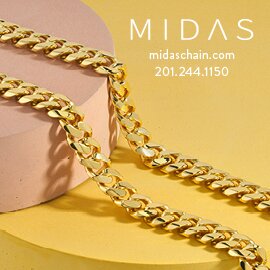That depends on what the problem is.
There are two ways for a jewelry store to increase its sales; they can either increase the amount they sell to existing customers who come in, or they can get more customers to walk through the door. Both areas can be improved, but the strategy required is sharply different.
Let's deal with the first one. There are a number of ways to improve the amount that can be sold to existing customers including:
1. Increasing the average value of what you show
2. Increasing the average value of what you carry as inventory (thus increasing the value of what you offer and will sell)
3. Increasing your mark ups (which will lead to higher prices and higher average sale values)
4. Reducing discount (thereby getting more from each sale)
5. Making the add on sale
To name but a few. Often a business can be achieving the foot traffic they need (let's face it, the average jewelry store has 8 out of every 9 customers leaving empty handed!) but not doing enough to convert the opportunities that are happening. This may come down to any one of a number of issues, poor staff selling skills, not enough staff, poor inventory selection, bad lighting…there are many reasons we have pinpointed for why this may happen.
But what if the issue is a lack of foot traffic? Many stores fail to identify that this is the problem. They, too often go via feeling, "you could fire a gun in the store and not hit anyone" rather than actual data. The fact remains if you don't first know if you have sufficient foot traffic, you don't know what you need to do to fix it. Not having enough foot traffic is a marketing issue, not doing enough with them once you have them in-store is a management issue.
The only accurate way to know if you have sufficient people coming into your store (and hence whether your initial problem is management or marketing) is by having a people counter. This provides you with feedback that is more accurate than a hunch, and more indicative than your cash register. You may have a great days sales, but perhaps it occurred because of one really large item, and, in fact, you had a higher number of people leave your store disappointed than usual? This may not matter in the short term, but a few bigger sales will only cover over the cracks for so long.
So what is the impact on measuring and converting more customers?
Let's say you have 42,000 customers per year walk into your store, of which 35000 don't buy (without a people counter you wouldn't be able to measure this).
| Customers | Did Buy | Didn't Buy |
| 42000 | 7000 | 35000 |
| 10% better conversion | 3500 | -3500 |
| 50% | 10500 | 31500 |
If you can increase the conversion of the 35,000 by 10%, which means you can turn another 3,500 of them into customers you will increase the number who do buy from you, from 7000 to 10,500…an increase of 50%! If this store had an average sale of $100, and was able to maintain it with the conversion increase, they would see an additional $350,000 in sales per annum (3,500 x $100). Not bad for a little testing and measuring!
Put in this context, it becomes easier to see the impact that measuring foot traffic can have on a businesses performance, how you can identify if your issue is a lack of traffic or not, and how you can measure if you are improving your conversion rate, and hence your sales.
Feel free to contact us if you would like to know more about locating a people counters.
---
David Brown is President of the Edge Retail Academy, an organization devoted to the ongoing measurement and growth of jewelry store performance and profitability. For further information about the Academy's management mentoring and industry benchmarking reports contact Carol Druan at [email protected] or Phone toll free (877) 5698657

